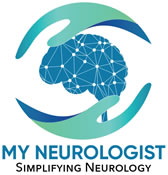PLMD is a sleep disorder. In this condition, an asleep person’s leg moves in a particular manner every few seconds. Most movements do not cause wakefulness, but some may take the person out of sleep, though just for a few seconds. In either case, the person is mostly oblivious of the condition, which may come to medical attention because of its impact on the sleeping partner. It is related to Restless Leg Syndrome (RLS) in a way that most patients with RLS have PLMD, though not all PLMD patients have RLS.
What are the symptoms of PLMD?
Other than what described above, which usually is not a complaint of the person having PLMD, the patient may report non-restful sleep, or daytime hypersomnia. These symptoms are non-specific and may come from multiple other conditions.
How is the diagnosis of PLMD made?
The diagnosis is made either based upon partner’s complaint and description, or with a sleep study (polysomnogram).
Where exactly is the problem in PLMD?
Its precise location is not known. General understanding is that the problem is similar to the one causing RLS, and in the brain.
How is PLMD treated?
Before considering any medical treatment, it is important to review all data and decide if any treatment is warranted. Any amount of PLMD, either witnessed by the partner or discovered during a sleep study, which does not wake the patient or create any daytime symptoms, may not require any medicine. A treatment may be a consideration if PLMD is severe enough to wake the patient (described as PLMD arousal index on a sleep study – compared to just PLMD index) more than a few times an hour. Even then, if the patient has no complaints attributed to disturb sleep, like daytime hypersomnia or non-restful sleep, its treatment is debatable. If a decision for treatment is made, medicines to consider are similar to the ones described for RLS.
As this condition may be more troublesome for the sleeping partner, an effective and safe approach is to sleep in separate beds. Many times, a medicine is prescribed so that they may sleep in the same bed.
Where can I get more information about PLMD?
American Academy of Neurology
American Academy of Sleep Medicine


Leave a Reply
Your email is safe with us.
You must be logged in to post a comment.